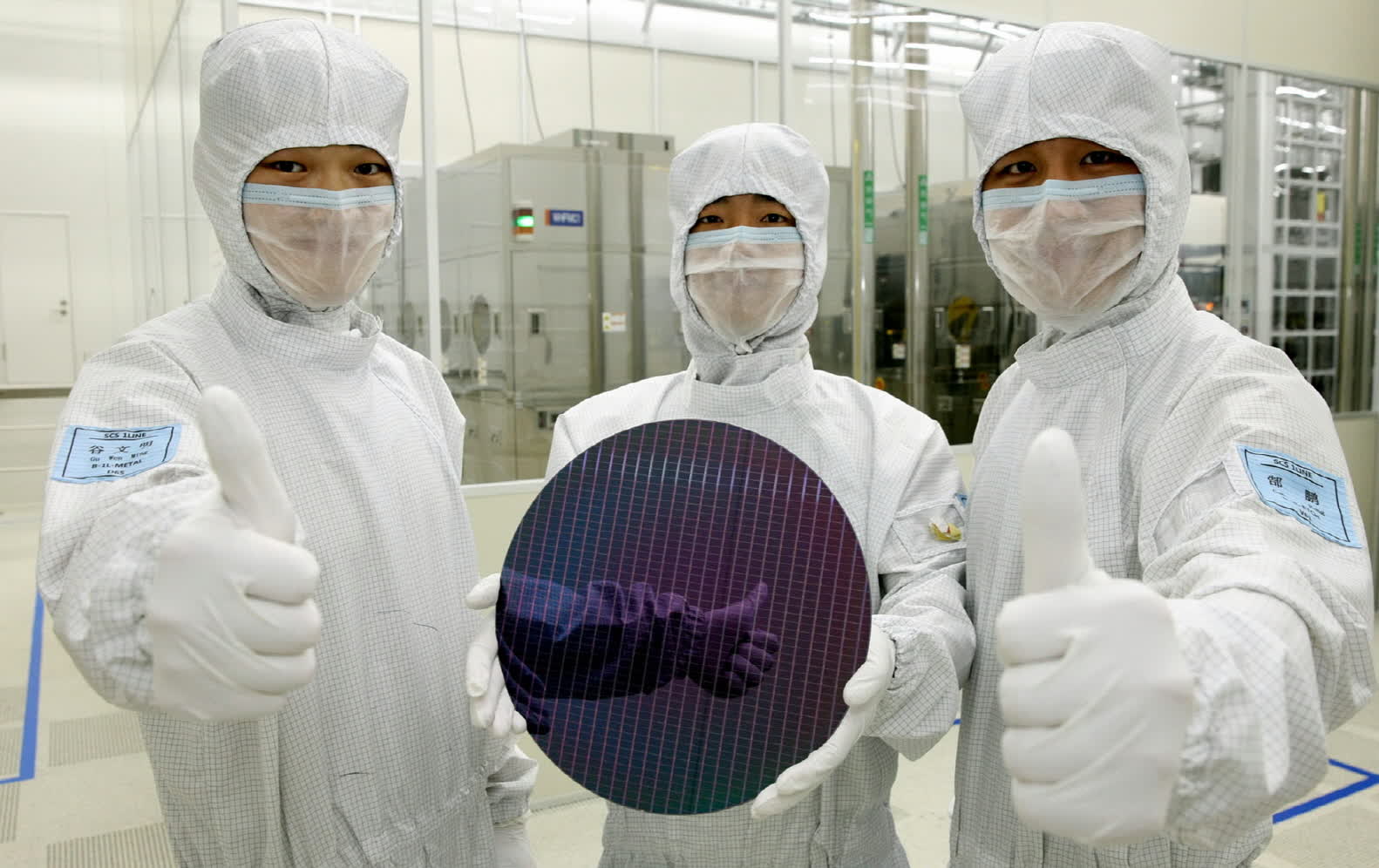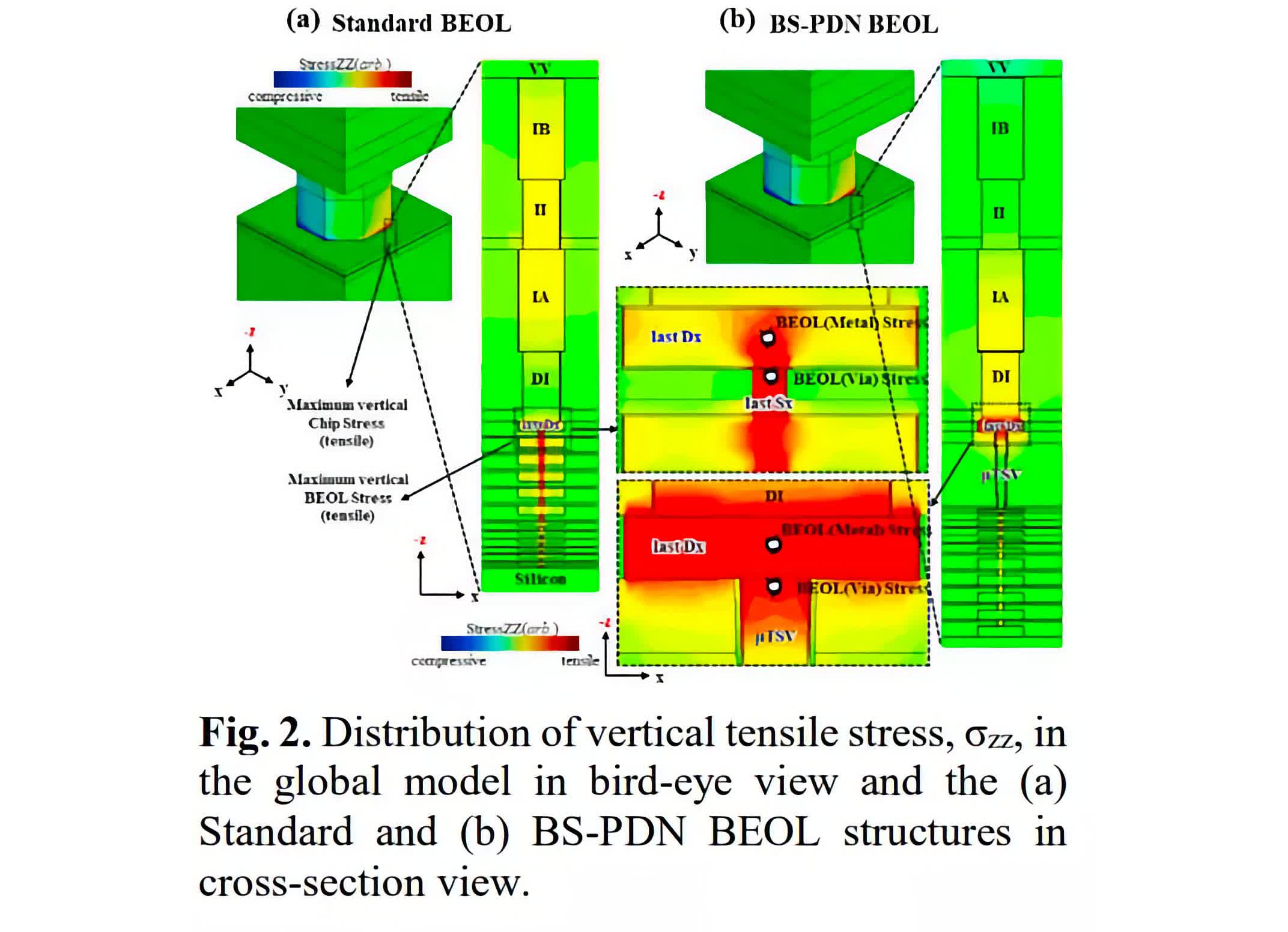Through the looking glass: Many advances in semiconductor technology hinge on reducing package sizes while incorporating added functionality and more efficient power delivery methods. Present methods of power delivery consume significant space on the wafer, leading to increased costs, larger die sizes, and fewer transistors. Earlier this year, Samsung Semiconductor presented its research on an alternative to conventional semiconductor power delivery methods: backside power delivery. This could lead to significant reductions in die size and decreased routing congestion.

According to a report from TheElec and Samsung's presentation at this year's Very Large Scale Integration (VLSI) Symposium, the semiconductor manufacturer used new backside power delivery network (BS-PDN) approaches to successfully reduce the required wafer area by 14.8% when compared to traditional front side power delivery networks (PDNs).
The successful implementation also yielded 10.6% and 19% area reductions in two ARM circuits while reducing wiring length by 9.2%.
In traditional frontside PDNs (FSPDNs), semiconductor components must be arranged on the front side of the wafer in order to provide transmission from the power line to the signal line and to the transistors.
This configuration requires shared space and resources between the delivery and signal networks, increasingly resistant routing to carry electrons across the back-end-of-line stack, and can result in energy loss during transmission to ground rails in the semiconductor structure.
BS-PDN (Backside Power Delivery Network) is designed to address these architectural and power delivery limitations. The approach completely decouples the power delivery and signal networks and uses the backside of the wafer to accommodate power distribution. Using the backside of the wafer, Samsung and other semiconductor manufacturers can instead direct power delivery through shorter, wider lines that offer less resistance, improved power delivery performance, and reduced routing congestion.
While the move from FSPDN to BS-PDN sounds promising, there are several challenges that prevent it from becoming a standard approach for manufacturers pursuing the technology.

One of the biggest challenges to implementing the new power delivery model, also presented by Samsung at the symposium, is the potential reduction in tensile strength associated with BS-PDN. When applied, BS-PDN can reduce the tensile stress acts and through-silicon via electrode (TSV), resulting in separation from the metal layer.
Samsung said that this problem can be solved by reducing the height or widening the TSV, however more research and testing is required before a solution can be formally announced. Additional advances in signal and power line connectivity will also be required to successfully apply BS-PDN.
In addition to the above, advances in chemical mechanical polishing (CMP) technology would also be required. Current CMP implementations are used to remove 5 to 10 microns of "peaks and valleys" from the backside of a wafer. Implementing BS-PDN could require a new way to polish the wafer without damaging the underlying power components.
Samsung does not have a current timeline outlining official implementation of BS-PDN-based architectures, but based on current findings and challenges, it's not yet clear if we'll see BS-PDN implementations from Samsung, or other manufacturers like TSMC and Intel, for several more years.
Image source: imec-int.com


